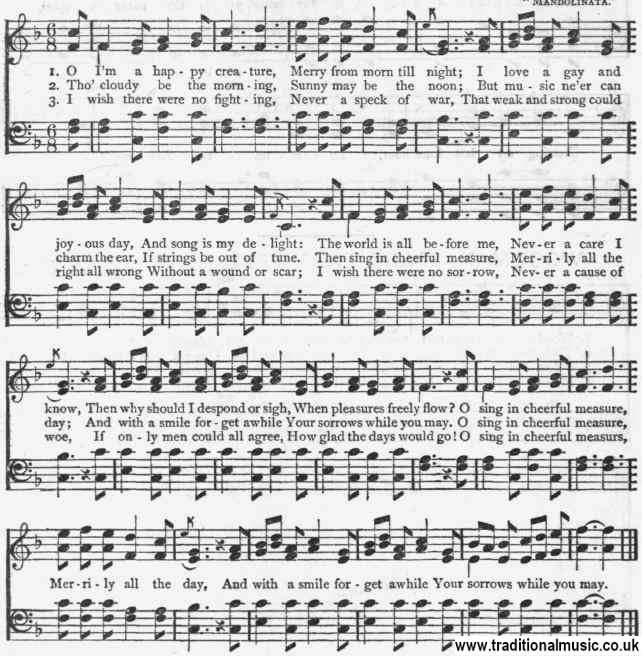Favorite Songs and Hymns For School and Home, page: 0228
450 Of The World's Best Songs And Hymns, With Lyrics & Sheet music for voice & piano.
| Share page | Visit Us On FB |
|
228 FAVORITE SONGS FOR SCHOOL AND HOME. |
|||
|
It is stated on what seems very good authority that stringed instruments were unknown among the Amer�ican Indians and among the ancient Mexicans. The mandolin, which was introduced here by the Tipaldisa few years ago, has taken firm hold upon the affections of music-loving people of some localities, and many amateur clubs have been formed for the purpose of becoming efficient performers on this beautiful little instrument. Many people regard it as a very inferior instrument, but Beethoven did not think it beneath him to compose music for it. Only two varieties of mandolins have as yet been brought to this country, |
the Milanese and the Neapolitan, having eight string although they are also made in Germany. The strings are of wire and are twanged with a plectrum, or pick, or tortoise shell, and it is said that it is not difficult to learn to play well on this instrument. The guitar seems to stand between the wooden sounds of the banjo and the tinkling of the mandolin, while its sweet sadness suggests more than any other instrument its appropriateness as an accompaniment while the voice sings love songs. The mandolin " craze " is regarded as a passing fancy, but the demand for guitars is con�stant and steady, and to-day, as it was nearly fifty yean |
||
|
THE MANDOLIN SONG, |
SPANlSH. |
||
 |
|||
|
ago, the btst instruction book is that written by Carulli. Another excellent one is by Carcassi, these two being the best published. The zither is fast becoming a dangerous rival to the above-named stringed instru�ments. Not so difficult as the harp, perhaps, but more difficult to play well than the banjo, mandolin, or guitar, the zither is so delightful when well played that the performer feels more than repaid for the time spent in practicing. This instrument was formerly supposed to have been invented by the ancient Greeks, but it is now generally conceded that it originated in the Tyrolese Alps or else in Southern Germany, |
where it is very common. The name cithara has been applied to several stringed instruments of various forms, and was known as early as the ninth century in Ger�many. In its present form it is shaped not unlike a harp, has from thirty-one to forty-four strings, and, being laid on a properly constructed table, is played with both hands, a shield being worn on the thumb of the right hand. The zither embraces almost six octaves, and consequently is nearly equal to the piano in scope. The instrument which has forty-four string* is generally preferred by professional players, while amateurs use those having a less number.�Karl Mtru |
||